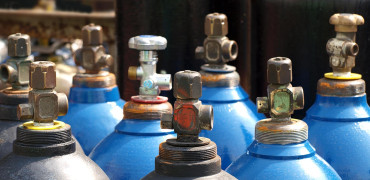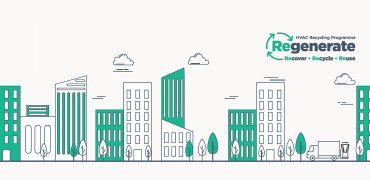As a heat pump trainer, I’m meeting more and more gas engineers who are adding renewable heating skills to their portfolio because they realise that we are very near the end of gas.
A lot of these are focusing on the residential market, which is just as well as the government has set a target for the industry of installing 600,000 heat pumps a year and we are nowhere near that yet.
But I’m not seeing enough engineers on the commercial side look at the opportunities to build their business which surprises me because the scope for both carbon reduction and business success is huge.
However you look at it, there’s a huge amount of scope for carbon reduction in commercial heating
Residential is not enough
There are an estimated 27 million homes in the UK and around 2 million commercial buildings. All of them need heating and hot water.
Around 80% of existing buildings will still be in use by the time we get to 2050, which equates to around 21.6 million current homes and 1.6 million existing commercial buildings.
Whilst the news seems to focus on the need for 600,000 heat pump installations a year, this is only talking about domestic installs and forgets the carbon-reduction and energy savings from the commercial sector.
In very simplistic terms, the average home would probably need a 5kW heat pump which, for 21.6m houses equates to 108m kW of heating.
Fitting 600,000 a year would mean 3m kW each year, which means it will take 36 years to get all of these homes doing what they need to.
We only have 26 years until the 2050 target!
The role of commercial heating
I spent some time looking at commercial installations that we’ve been involved in over the past year, and these range from an 80kW CAHV heat pump for a sports centre to a large 556kW system for the entire science block at the University of Salford.
If we average out the requirement for a commercial building to 150kW of heating and hot water and multiply that by the 1.6 million existing commercial buildings, that equates to 240m kW of heating.
That in turn equates to over 9m kW a year, over the next 26 years so, in many ways, commercial heating offers a clearer and simpler route towards net zero … and significant business for any commercial heating engineer who is ready to capitalise on the opportunity.
You may say that 150kW is more than the average commercial building needs, but even if we average this out at 100kW, that still amounts to 160m kW of heating, which is still more than 6m kW a year over the next 26 years.
That’s a lot of carbon saving over the gas boilers that the heat pumps will replace!
So, whichever way you look at it, there is a huge amount of scope for carbon reduction in the commercial sector.
Decarbonising public buildings
The Public Sector Decarbonisation Scheme, otherwise known as ‘Salix Funding’ after the company administering the scheme, is really starting to make a difference.
Now in its fourth phase, the scheme is heavily oversubscribed each time it opens for applications. However, each year of the scheme means more and more council offices, schools, libraries, museums and other public spaces benefit from renewable systems that replace their aging, carbon-heavy gas and oil heating.
According to the gov.uk website the last phase of £230 million in October 2023 will not only help to decarbonise the public sector with low carbon heating and energy efficiency measures, it is also expected to save the public sector an estimated £650 million per year on average to 2037.
Decarbonising commercial buildings
At the same time, commercial building owners are now starting to realise that they are in danger of being left behind if they do not focus on decarbonisation and renewable heating.
A growing body of legislation on reducing energy consumption and delivering decarbonisation of heat in commercial building stock is putting some existing buildings in danger of becoming what are known as ‘stranded assets’.
Owners of older buildings face significant costs associated with meeting higher standards for Energy Performance Certificates (EPCs) and are trying to avoid any disruption from swopping out gas for heat pump.
Yet their buildings will fall further behind environmental requirements every year, leaving them unlettable, with a shrinking sales value.
So there is a real opportunity for any commercial DX or Heating engineer ready and able to help customers in both the commercial and public sector.
Give me a call if you’d like to know more?
Ben Bartle-Ross is a technical trainer at Mitsubishi Electric




